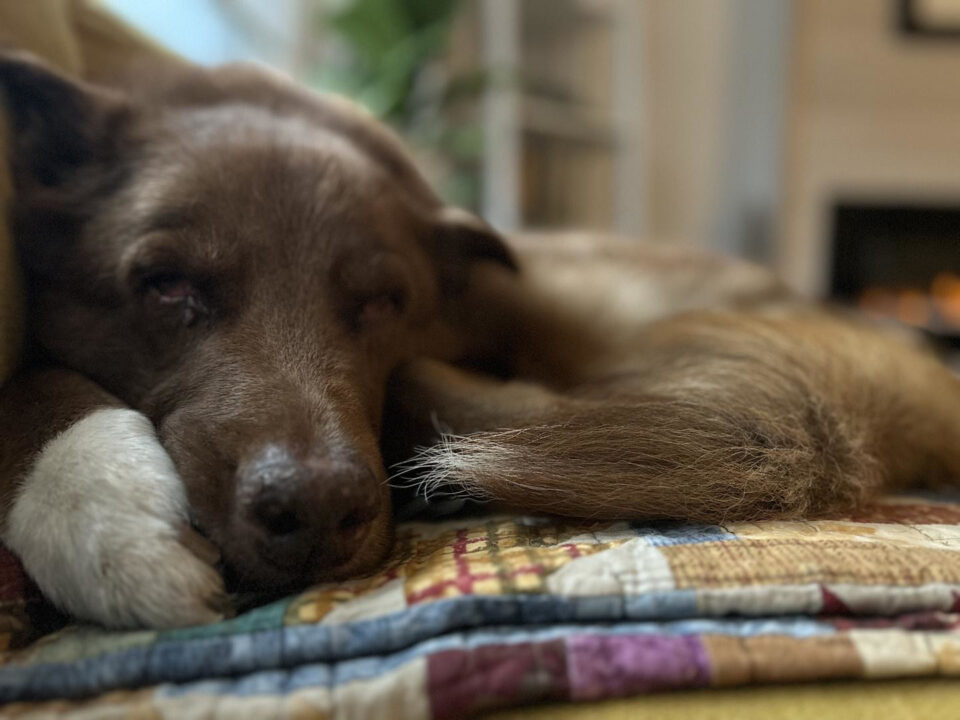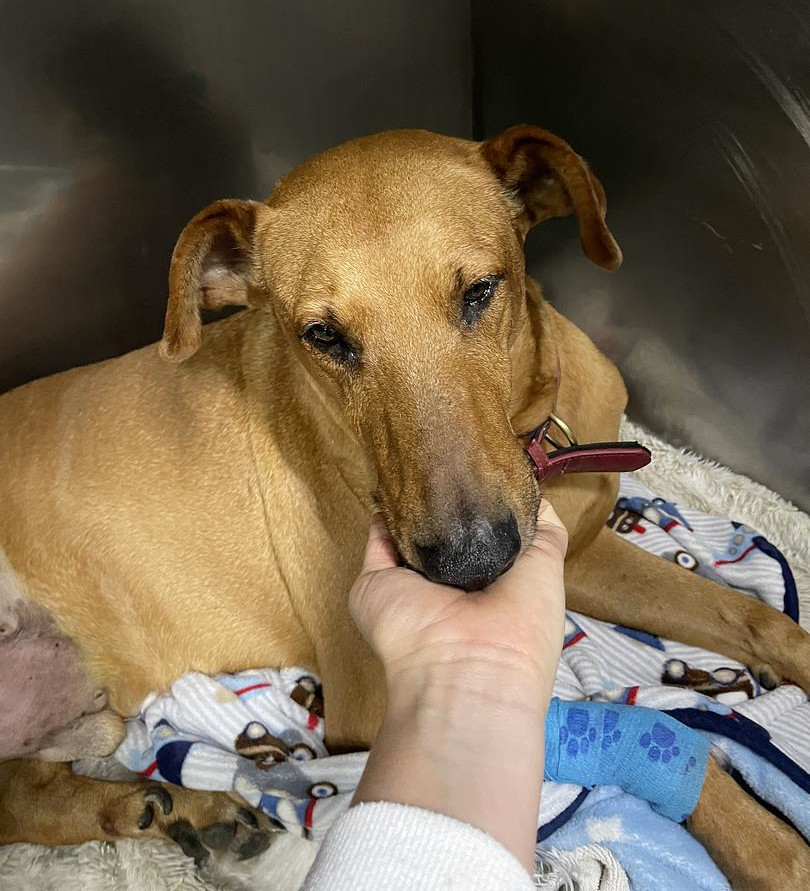It’s not uncommon for a brand new Tripawd to show worrisome post-operative behaviors, like anxiety and restlessness at night. It even happens to long-time Tripawd dogs. But the good news is you and your vet can do something about it!
If you’re reading this wondering “Is my pet in pain?” the SnoRE (Sleep and Night-time Restlessness Evaluation) Score Chart can help you and your vet work together for better pain management.

Good Sleep Matters for Healing and Comfort
Just like people, animals heal and function better when they get good sleep. An animal who is not comfortable will show signs like constantly shifting positions, twitching, getting up frequently, or vocalizing.
Restless patterns can signal that acute or chronic, long-term pain is interfering with deep, restorative sleep.
Poor rest can lead to slower recovery, fatigue, and even behavioral changes during the day, like grumpiness, clinginess, or reluctance to move.
Behaviors like these that consistently disturb sleep can indicate chronic pain. If your dog’s sleep seems restless—lots of position changes, panting, or whining—it’s worth noting and discussing with your vet.
Working together to use the SNoRE Chart can lead to sleep improvements for better mood, movement, and aging on three legs.

You and Your Vet Can Rate Your Tripawd’s SNoRE Score for Better Pain Management
The SNoRE Score Chart is made by the researchers at North Carolina State University’s College of Veterinary Medicine’s Translational Research in Pain (TriP) department. Their researchers develop tools that help translate observations of a pet’s behaviors into meaningful data for veterinarians.
These tools are called “Clinical Metrology Instruments (CMIs),” which are basically questionnaires that help objectively measure how our pets feel.
One of TriP’s CMI tools is the “SNoRE Score.” This questionnaire is designed to help veterinarians and dog parents track sleep quality at home.
If you suspect your Tripawd dog is in pain, let your veterinary care team know about the SNoRE Score Chart, so together you can decipher what your pup is trying to tell you about their pain levels.
What Is the SNoRE Score?
The SNoRE Score asks pet parents to rate five behaviors observed over a seven-day period:
Restful sleep: How easily does your dog stay asleep without moving or getting up?
Twitching: Do you notice muscle twitches while sleeping?
Dreaming: Does your pet seem to dream often or very little?
Shifting position: Are they constantly changing position during the night?
Vocalizing: Do they whine, bark, or make noises while asleep?
Each behavior is scored on a scale from 1 to 10, where 1 = never and 10 = constant. The higher the score, the more restless your dog’s sleep may be, which can indicate pain.
By filling out the SNoRE chart during recovery, or even weekly as life gets back to normal, you and your vet can work together to start spotting trends.

What Your Tripawd’s SNoRE Score Might Mean
If your dog’s sleep is becoming more restless, your vet might suggest adjusting pain medication or anti-inflammatories.
If scores improve after a treatment change, that’s a sign your pet is likely more comfortable.
If restless behavior appears suddenly, it may signal something new—like an infection, injury, or stress.
Good Pain Management Leads to a Hoppier Life on Three
Tripawds can certainly live a great life on three, but generally speaking, three-legged dogs and cats are more at risk of chronic pain than four-legged ones. Their bodies just aren’t designed to move well without that spare leg. But that doesn’t mean they have to live with pain.
Being a Tripawd parent means always being alert to pain signals. When you work with your vet care team to strike that balance of good pain control, watching your new Tripawd sleep soundly through the night is one of the best signs that life is good for the whole pack.